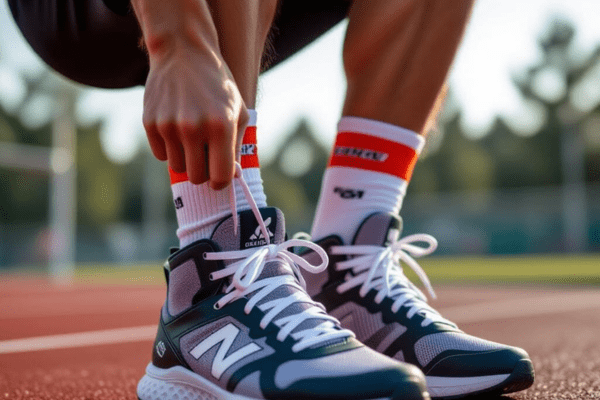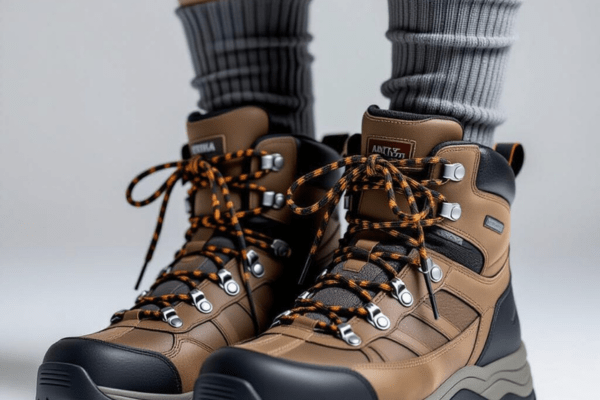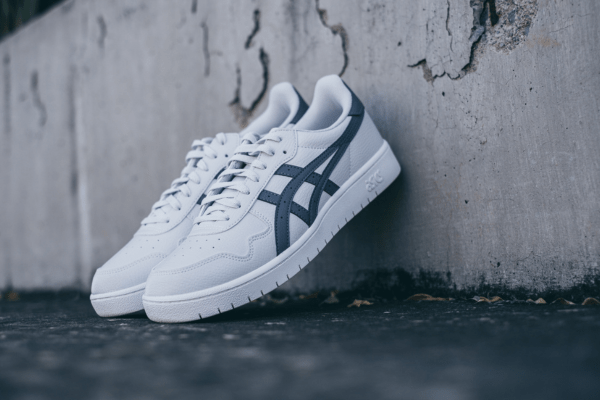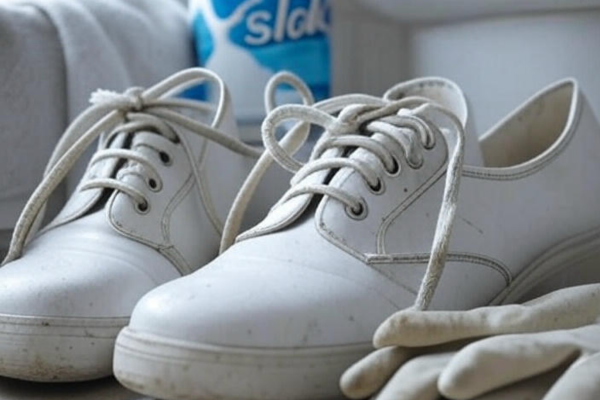1. 1. Introduction
Ankle support is very important for everyone—whether you play sports, go hiking, or do everyday activities. Good ankle support helps reduce the chance of injury and keeps your feet stable on different surfaces. But many people wonder, what is the best lacing method for ankle support? The answer is that different shoe types need different lacing techniques to give the best support. Choosing the right method helps protect your ankles, improve comfort, and prevent pain.
Welcome to BestShoeLaces, your go-to source for expert advice on all types of shoe laces. Whether you’re looking for the best lacing method for ankle support, or exploring different types of shoelaces, we’ve got you covered. Don’t miss our in-depth guide on how to lace high-top shoes for maximum support.
2.Why Proper Lacing Matters for Ankle Support
If you want to know what the best lacing method for ankle support is, it is important to understand why proper lacing matters. Correct lacing helps protect your ankles in many ways.
How Correct Lacing Reduces Injury Risk
When shoes are laced the right way, they hold your feet firmly. This stops your ankles from moving too much or twisting. If your shoes are loose or laced poorly, your ankles can easily twist or turn, which can cause pain or injuries like sprains. Correct lacing helps keep your ankles stable and protected.
Improves Comfort and Stability
Good lacing not only protects your ankles but also makes your shoes more comfortable. When the laces fit well, your feet don’t slip inside the shoes. This gives you better balance and helps you walk or run without wobbling. Comfort and stability go hand in hand when you use the best lacing method for ankle support.
Common Ankle Problems Caused by Poor Lacing
Poor lacing can cause several problems, such as:
- Ankle sprains and twists
- Blisters from feet sliding inside the shoe
- Pain from uneven pressure on your feet
- Weak support that makes walking or running unsafe
If you want to avoid these issues, what is the best lacing method for ankle support? is very important.

3. Lacing Running Shoes to Reduce Ankle Injury Risk
Running is great exercise, but many runners face problems like ankle sprains and heel slipping. These problems happen when shoes do not fit well or the lacing is not done correctly. That’s why knowing the best lacing technique for ankle support is very important.
Problems Runners Face
- Ankle sprains: When your ankle twists because the shoe does not hold it firmly.
- Heel slipping: When your heel moves up and down inside the shoe, causing discomfort and blisters.
- Poor stability: Loose shoes can make your feet unstable and increase injury risk.
To stop these problems, you need to learn ankle support lacing techniques that make your shoes fit better and protect your ankles.
Step-by-Step Running Shoe Lacing Method for Support
- Start at the bottom: Lace your running shoes normally through the first two eyelets.
- Make a loop: At the second-to-last eyelets, create a small loop on each side by passing the lace through the same eyelet two times.
- Cross the laces: Take the opposite lace and cross it through the loop on the other side.
- Pull tight: Pull the laces tight so the loops hold your ankle firmly.
- Tie securely: Finish by tying your laces with a strong knot to keep them in place.
This lacing style locks your ankle and prevents it from moving too much. It is one of the best lacing techniques for ankle support because it gives both comfort and stability.
Importance of Shoe Lacing for Ankle Injury Prevention
Proper shoe lacing is not just about tightness. It is about fitting the shoe perfectly to your foot shape. Using the right lacing method helps:
- Prevent ankle injuries like sprains.
- Reduce heel slipping and blisters.
- Keep your feet comfortable and steady while running.
By understanding the importance of shoe lacing for ankle injury prevention, you can run safely and enjoy your exercise without pain or risk.
4. How to Secure Shoes for Ankle Stability
Keeping your ankles safe while walking, running, or playing sports is very important. One simple way to do this is by using the right lacing methods for ankle stability. Proper shoe lacing can give you strong ankle protection and shoe lacing that helps prevent injuries.
General Tips for All Shoe Types
- Always start lacing from the bottom eyelets and move upwards evenly.
- Ensure the laces are secure yet comfortable, not overly tight. Tight laces can hurt your foot.
- Keep your heel locked in place to avoid slipping, which can cause ankle twists.
- Use eyelets or hooks near the top of the shoe to secure your ankle better.
- Check your laces during activity and tighten if they feel loose.
These tips work for sneakers, boots, or any shoes you wear. Proper lacing helps your foot stay steady and reduces ankle injuries.
Using Lace Locks and Double Knots
Two easy tricks help keep your shoes secure for extra ankle support:
- Lace Locks (Heel Locks): This method creates extra loops near the top eyelets. You pass the laces through these loops to “lock” your heel in place. This stops your foot from sliding inside the shoe, giving better ankle stability.
- Double Knots: After tying your shoe normally, tie a second knot. This simple step stops your laces from coming undone while you move, keeping your ankle supported all the time.
Comparison of Different Ankle Support Lacing Methods
- Basic lacing is quick but may not give enough ankle hold.
- Heel locks and lace locks are better because they lock your heel and ankle tightly.
- Double knots keep laces from loosening, so support lasts longer.
By using these smart lacing methods for ankle stability, you protect your ankles and feel more comfortable. Understanding the comparison of different ankle support lacing methods helps you choose the best way to lace your shoes for strong ankle protection.
5. Figure Eight Lacing for Ankle Support
Figure eight lacing is a special way to tie your shoes that gives extra strength and protection to your ankles. It is one of the best ankle brace lacing methods for sports, hiking, and activities where ankle safety is important.
Step-by-Step Instructions
- Begin by threading the laces through the lowest eyelets of your shoe, making sure both ends are pulled evenly.
- Cross the laces and put them through the opposite eyelets, just like a normal criss-cross.
- When you reach the middle eyelets, instead of crossing normally, loop each lace under and around the opposite side, creating a figure eight shape.
- Continue this figure eight pattern all the way up the shoe to the top eyelets.
- Finish by tying a secure knot or double knot to keep the laces tight.
This lacing pattern locks your foot and ankle more firmly inside the shoe, reducing slipping and improving control.
Why Use Figure Eight Lacing?
The figure eight lacing method is great for anyone who wants optimal lacing for ankle injuries. It offers strong support by wrapping the shoe tightly around your ankle, which helps prevent sprains and twists.
Benefits of Proper Shoe Lacing on Ankle Stability
- Provides extra hold to the ankle.
- Reduces movement inside the shoe.
- Improves comfort and confidence during activities.
- Works well with ankle braces for added protection.
Many athletes and hikers prefer figure eight lacing because it gives them the right balance of support and flexibility. If you want to keep your ankles safe during tough movements, this is a perfect choice.

6. Heel Lock Lacing for Ankle Stability
Heel lock lacing is a smart way to tie your shoes to keep your heel from slipping. This method helps improve ankle stability and stops blisters caused by heel rubbing. It is one of the best ankle support shoe-tying methods for anyone who wants to protect their feet during walking, running, or sports.
Step-by-Step Method
- Lace your shoes normally until you reach the second-to-last eyelets.
- Rather than crossing the laces at the top, guide each lace straight up into the final eyelet on its own side, forming a small loop.
- Then, cross the laces and thread each one through the loop on the opposite side.
- Pull the laces tight and tie your shoes with a secure knot.
This creates a “lock” around your heel, holding it firmly in place inside the shoe.
Why Use Heel Lock Lacing?
Heel lock lacing is a great DIY ankle support using shoe lacing because it stops your heel from lifting up while you move. This prevents painful blisters and reduces the risk of ankle injuries caused by slipping.
Benefits of Shoe Lacing for Injury Prevention
- Keeps your heel stable and secure.
- Prevents blisters and discomfort.
- Improves overall ankle support.
- Easy to do and works with most shoe types.
Using heel lock lacing is an effective way to get better ankle protection without buying extra gear. It’s simple, comfortable, and helps you stay safe during all your activities.
7. High Top Shoe Lacing for Ankle Support
High-top shoes are designed to protect your ankles better than regular shoes. They cover the ankle and give extra support, which helps stop injuries like sprains. When you use the right lacing style on high-top shoes, it makes ankle support even stronger.
Benefits of High-Top Shoes for Ankle Protection
- They give extra coverage around your ankle.
- Help keep your ankle stable during movement.
- Lower the risk of twisting or rolling your ankle.
- Work great with special lacing for better support.
Best Lacing Style for High-Tops
For high-top shoes, a tight and secure lacing pattern is very important. Using lacing patterns for ankle braces can improve how your shoe fits and supports your ankle. The best method is to lace your shoes firmly, especially around the top part, to hold your ankle in place.
This type of lacing not only holds your foot tightly but also affects how your ankle moves. It improves ankle biomechanics, meaning your ankle moves better and is less likely to get hurt.
Why Lacing Matters
Good shoe lacing helps with ankle injury support lacing by:
- Increasing stability.
- Reducing movement inside the shoe.
- Supporting ankle bones and muscles.
So, when you wear high-top shoes, make sure you use the right lacing to get the best ankle protection and comfort.
8. Hiking Boot Lacing for Ankle Protection
When hiking on rough and uneven ground, your ankles need extra protection to stop them from rolling or twisting. Proper hiking boot lacing helps keep your ankle stable and safe. Using the right lacing method can make a big difference in preventing injuries.
Lacing to Prevent Ankle Roll on Uneven Terrain
Uneven trails can make your feet slip or your ankle twist. But if you lace your hiking boots correctly, it tightens the shoe around your ankle and lowers the risk of ankle rolls. This means you can walk confidently without worrying about hurting your ankle.
Hiking Boot Lacing Techniques for Weak Ankles
For people with weak ankles, special lacing is very helpful. Foot and ankle lacing techniques focus on making the shoe fit snugly around the ankle. This improves support and stability, so your ankle stays strong.
Here are some ankle stabilization lacing tips for hiking boots:
- Use a heel lock or lace lock method to keep your heel from slipping.
- Secure the laces firmly just above the ankle for added support.
- Avoid very loose laces, as they don’t protect the ankle well.
- Use strong, comfortable laces—the best shoelaces for ankle support and comfort help keep the boot secure all day.
By following these simple lacing methods, you can protect your ankles better during hikes, especially if your ankles feel weak or tired.
9. Athletic Shoe Lacing for Ankle Strength
Strong ankles are important for sports training and gym workouts. The right shoe lacing can help make your ankles more stable and less likely to get hurt. Using good lacing methods supports your ankle muscles and reduces the risk of injury.
Best Methods for Sports Training and Gym Workouts
For athletes and fitness lovers, ankle support lacing techniques are key. When you lace your athletic shoes properly, you get better balance and comfort. This helps your ankles stay strong during fast moves, jumps, or heavy workouts.
Here are some simple tips for athletic shoe lacing to improve ankle strength:
- Apply heel lock lacing to prevent your heel from slipping inside the shoe.
- Tighten the laces evenly to avoid pressure points but keep the ankle secure.
- Try figure-eight lacing if you want extra ankle support for jumping or quick turns.
- Make sure laces are tight but not too tight, so blood flow is good and your foot feels comfortable.
By using these ankle support lacing techniques, you protect your ankles and improve performance. Good shoe lacing can make a big difference in injury prevention and ankle strength during sports and workouts.
10. How to Lace Basketball Shoes to Avoid Ankle Injuries
Basketball is a fast game with lots of quick moves, jumps, and turns. This can make your ankles more likely to get hurt, especially with ankle sprains. That’s why using the right lacing method for your basketball shoes is very important.
Basketball-Specific Ankle Injury Risks
Because basketball players stop and change direction fast, ankles can twist easily. Poor lacing can let your foot move too much inside the shoe, increasing the chance of injury. Good lacing helps keep your ankle steady and protected.
Lacing Pattern to Keep Ankle Locked in Place
The best way to avoid ankle injuries is by using sports-specific lacing methods for ankle protection. One great method is the heel lock lacing, or “lace lock,” technique. This locks your heel in place so it doesn’t slip. It also keeps your ankle tight and supported without being too tight.
Here’s how you do it:
- Lace your shoe normally up to the second-to-last eyelets.
- At the last eyelets, create loops on each side.
- Cross the laces and thread them through the loops.
- Tighten the laces and tie a strong knot to lock your ankle.
This method helps with ankle sprain recovery and lacing techniques by giving your ankle the support it needs while playing basketball. Remember, well-laced shoes mean better ankle protection and less risk of injury.
11. Ways to Lace Trail Running Shoes to Enhance Ankle Support
Trail running is different from road running because you run on rough, uneven ground. This can make your ankles tired and more likely to get hurt. That’s why it’s important to use good lacing techniques to protect your ankles.
Adjusting Lacing for Uphill and Downhill Runs
When you run uphill, your foot slides backward inside the shoe. To stop this, use a tighter lacing near the top of the shoe. This helps hold your ankle firmly and gives better grip. For downhill runs, your foot moves forward, so adjust the laces to lock your heel tightly using ankle sprain lacing techniques. This stops your foot from sliding and lowers injury risk.
Preventing Fatigue on Uneven Terrain
Uneven paths can make your ankle muscles tired quickly. Proper lacing supports your ankle and lowers fatigue by keeping your foot stable. Use ankle stabilization lacing tips like double knotting and lace locks to keep the shoe snug but comfortable.
By using these smart lacing methods, you protect your ankle and enjoy your trail runs without pain or injury.
12. Quick Tips to Improve Ankle Support in Any Shoe
Good ankle support starts with the right shoe lacing. Using proper foot and ankle lacing techniques can make a big difference in how stable and safe your ankles feel. Here are some easy tips to help you improve ankle support in any shoe:
- Replace Worn-Out Laces
Old, stretched, or broken laces don’t hold your shoes tight enough. Always replace worn-out laces with new ones. Fresh laces give better grip and help your ankles stay stable. - Choose the Right Lace Material
Waxed laces are slippery but strong, so they stay tied longer and give steady support. Unwaxed laces can be rougher and might loosen faster. Choosing the right lace material helps keep your shoes snug and improves stability lacing for ankles. - Keep Laces Evenly Tight
Ensure your laces are snug without being overly tight. Consistent tension from the bottom to the top provides even support around your foot and ankle. This prevents your foot from slipping inside the shoe and reduces the risk of ankle injuries.
By following these simple tips and using good lacing methods, you can keep your ankles safe and comfortable every time you wear your shoes.
Conclusion
To sum up, what is the best lacing method for ankle support? helps protect your ankles and reduce injury risk. Different activities need different lacing styles, and using the right method can improve comfort, stability, and ankle safety.
Whether you try heel lock, figure eight, or high-top lacing, experimenting with these techniques will help you find what works best for your feet. Remember, the best answer to “What is the best lacing method for ankle support?” depends on your activity and personal comfort.
Always focus on good ankle support lacing techniques to keep your ankles strong and injury-free.niques to keep your ankles strong and injury-free.
FAQs
1. What is the most secure way to lace shoes for ankle support?
The most secure way depends on your activity, but techniques like the heel lock and figure eight lacing are known as the best lacing methods for ankle support. They work to keep your foot steady and protect against injuries.
2. Does high-top shoe lacing give better ankle stability?
Lacing high-top shoes enhances ankle stability by providing extra support to the bones and ligaments around the ankle. Using the right lacing pattern in high-top shoes enhances stability and reduces the risk of sprains.
3. Can changing my lacing method prevent ankle sprains?
Absolutely! Using proper ankle support lacing techniques can reduce the chance of ankle sprains by keeping your foot securely in place and providing extra stability during movement.
4. Is figure eight lacing or heel lock better for ankle support?
Both figure-eight lacing and heel-lock lacing are effective. Figure eight lacing offers excellent overall ankle stability, while heel lock lacing is great for preventing heel slipping and blisters. Choosing between them depends on your comfort and activity.
5. How tight should I lace my shoes for ankle protection without causing discomfort?
Your shoes should be laced tight enough to support your ankles but not so tight that they cause pain or restrict blood flow. Balanced tightness is key to effective ankle support lacing and overall comfort.


